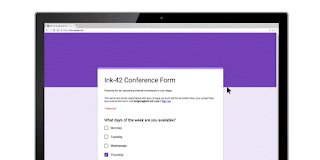On October 6, 2020 Google introduced the Google Workspace brand, product experience, and set of offerings to better equip customers for the future of work. Whether you're at home, at work, or in the classroom, Google Workspace is the best way to create, communicate, and collaborate.
Google has notified Google Cloud Partners like us that G Suite customers will be automatically transitioned beginning January 31st, 2022.
But please note that all legacy G Suite customers can choose to transition or upgrade early to receive the new Workspace features, plus take advantage of pricing incentives on annual commitments.
For customers on G Suite Business with Google Vault, the switch to Google Workspace Standard increases the price from $15.60 CAD to $23.40 CAD or $18 USD/user/month:
For customers on G Suite Basic the price remains the same at $7.80 CAD or $6 USD/user/month and the only features lost in the switch to Google Workspace Starter are Android and endpoint device management related.
If you have a legacy G Suite subscription and buy direct from Google, transitions to Google Workspace subscriptions and prices will begin as soon as November 2021. We highly recommend contacting a Google Workspace focused partner like us to review incentives available for upgrading. We deeply understand the nuances of the different plans and will ensure you buy only what you need, potentially saving you big money over the long term.
For customers considering dropping Google Vault, we offer less expensive 3rd party backup options that provide superior protection against malicious actions, as well as disaster recovery. Google Vault, however, is still the best option for e-discovery, retention policies, and legal holds.
For expert assistance on transitioning to Google Workspace, email us at info@interlockit.com or call us at (416) 840-6268 !
















